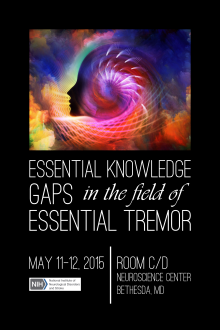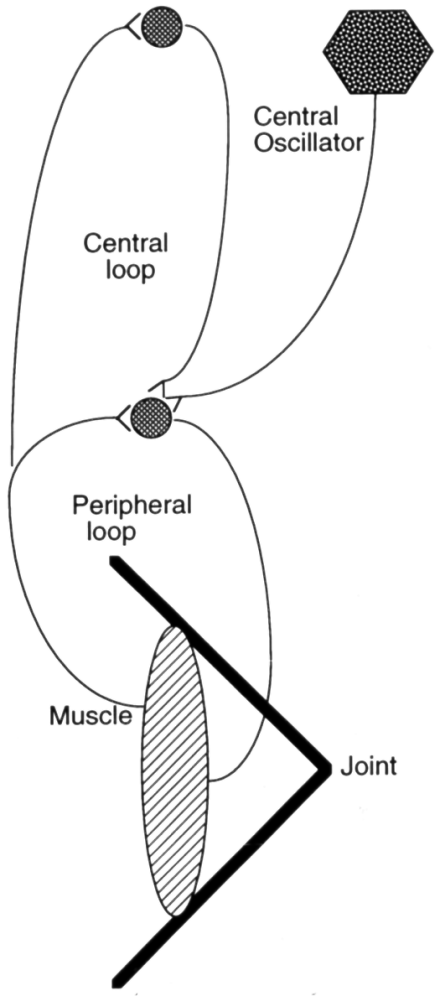Contact Number: 301-496-5745
Contact Email: katrina.gwinn@nih.gov
Location:
Neuroscience Center
6001 Executive Blvd
Rockville, MD
View Event Website

The objective of this workshop is to determine “essential” questions of basic-disease research (mechanisms, etiologies, biological pathways) in essential tremor (ET) and identify approaches towards them. ET is extremely common, although prevalence data on essential tremor are surprisingly difficult to interpret, with estimates between 0.08-220 cases/1000 persons, a variation of 2750-fold (Chen and Swope, 2003). Historically termed "Benign Essential Tremor", it is anything but benign, and is the cause of significant disability. Despite this, the field remains largely descriptive.
ET remains relatively unstudied in terms of etiology, reducing rigor of clinical studies. It is assumed to be cerebellar, but data are not recent. It is also not clear if it is on a spectrum of physiological (normal) tremor or a distinct entity. Treatments exist, but the levels of responsiveness and reasons for unresponsiveness remain unknown. Deep brain stimulation is used frequently to treat ET: an opportunity exists to better explore circuitry of this disorder. Genetics and other tools can be employed to better understand disease etiology and potential stratification of patients for clinical trials.
Related Resources
AgendaThe Essential Knowledge Gaps in the Field of Essential Tremor Workshop was sponsored by the National Institute of Neurological Disorders and Stroke and co-chaired by Drs. Katrina Gwinn and Wendy Galpern with the guidance of Drs. Günther Deuschl and Rodger Elble, and additional leadership from Dr. Ashlee Van’t Veer.
- On 5/11-5/12/2015, 62 scientists and representatives from multiple advocacy groups gathered at the Neuroscience Center in North Bethesda, Maryland
- Participants shared recent discoveries and discussed common challenges in essential tremor (ET) research.
- This inter-disciplinary workshop highlighted the complexity of ET research through five sessions covering: clinical characterization, treatment, physiology, genetics and pathology.

Tremors can be the result of purely mechanical oscillations stemming from tonic muscle fiber activity, mechanical-reflex oscillations, or from the interaction of a central oscillator with loops of central and peripheral neural structures.
Essential tremor, an involuntary, oscillatory movement of the hands and arms, and/or other parts of the body, is one of the most prevalent neurological movement disorders. It has significant morbidity due to effects on fine motor control, which impacts activities of daily living (e.g. drinking, handwriting). In recent decades, clinical and laboratory-based researchers
In an effort to outline the most recent findings and identify gaps in the field, seven experts presented talks, each coupled with a panel discussion amongst scientists both inside and outside the ET field. The details of these presentations and associated conversations, including recommendations to the ET community will be published in a white paper in the coming months.
As the workshop drew to a close, the meeting organizers led a discussion on the current state of science to establish specific areas of the field where those involved in ET research and treatment might focus their energy to improve understanding of this disorder. Recommendations included:
- ET should be considered as a clinically defined syndrome, with potentially multiple etiologies.
- Additional studies to determine the etiology of ET that explore underlying mechanisms and pathways are warranted.
- Improved understanding of the circuitry at cellular and neuroanatomical levels is necessary.
- Standardization for the acquisition and analysis of genetic and pathology samples, perhaps stemming from the efforts of a consortium, would be greatly valuable to the field.
- The neuropathological hallmarks of ET remain controversial so expansion in this area of study is encouraged.
- There is a need for increased enrollment of ET research participants, and the collection of common data elements, to foster collaboration and meta-analyses.
The overall aim of these approaches
